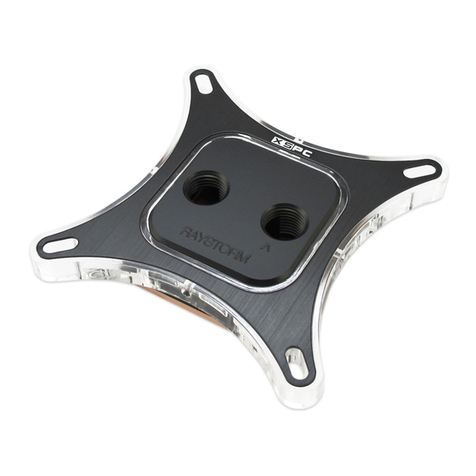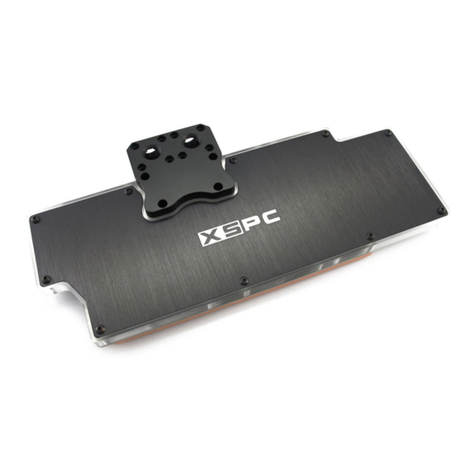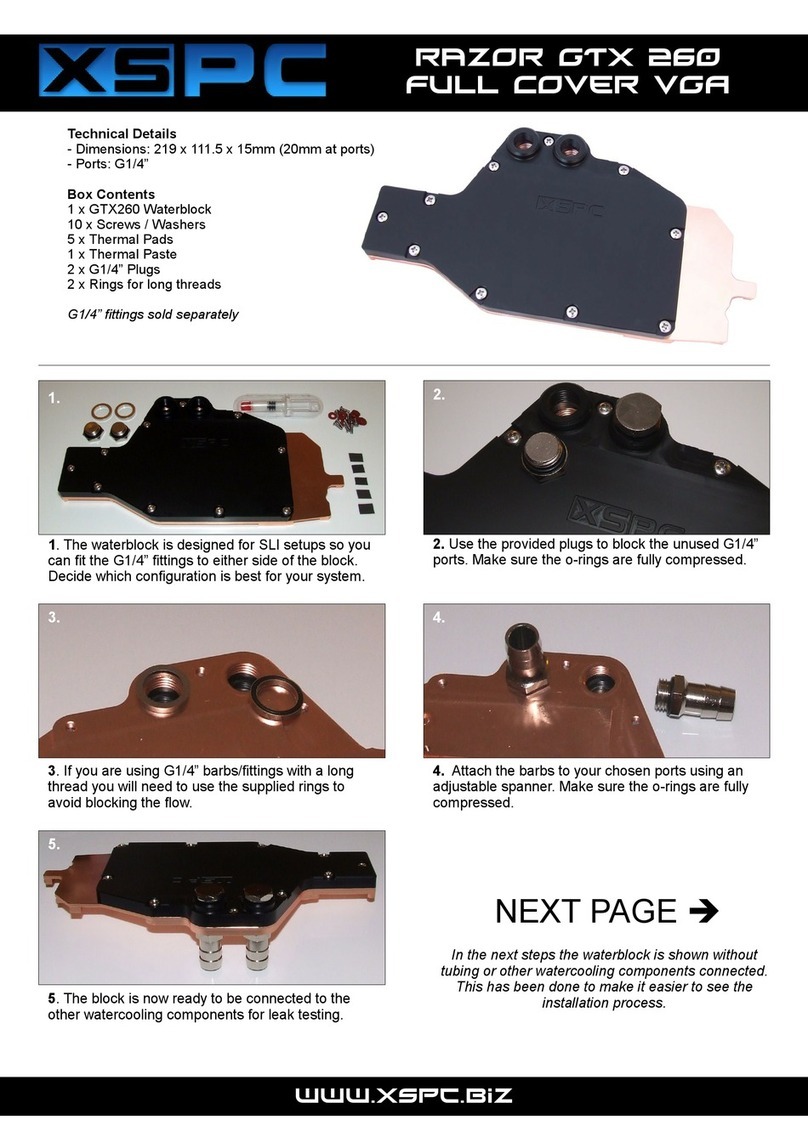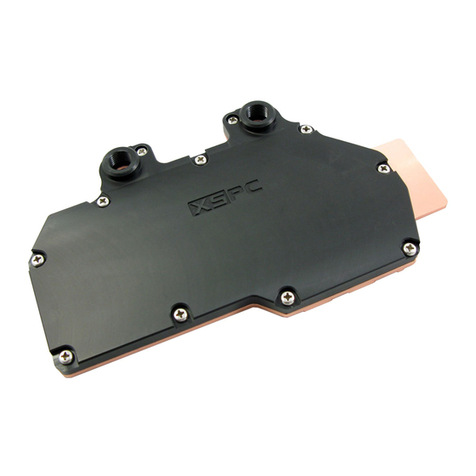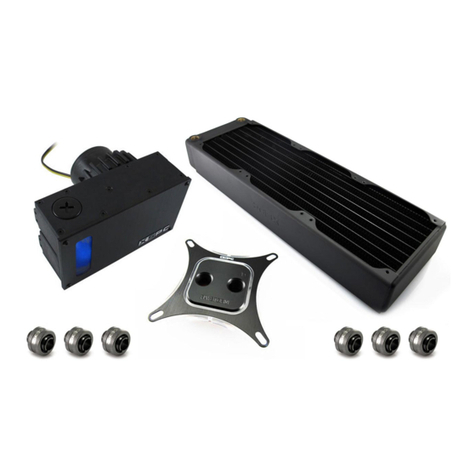3. - Filling the System
Water Additive
The water-cooling kit should be filled with a mix of de-ionized
water and the supplied water additive. Please see the bottle for
required concentration and mixing instructions.
Filling the reservoir
Once the tubing has been connected the next stage is to fill the
reservoir and remove the air from the system.
Filling the reservoir and system is an easy process but care
should be taken to avoid spillage.
1. Remove the filler cap
2. Pour a small amount of the mixed liquid into the reservoir
until full.
3. onnect the 3 pin power connector to start the pump
(see: how to start the pump outside of the PC)
4. Keep refilling the reservoir while the system is slowly filled
and the air is removed
. To help remove the air from the radiator gently rock the
radiator. Avoid putting undue stress on the tubing and connectors.
6. Once the system and reservoir appear full turn off the pump and leave to settle for 2min then Re-
Start the pump and top up if necessary.
7. Once you are happy that all the air has been removed from the system top up the reservoir then
replace the filler cap and finally turn off the pump.
Note: It is normal for the pump to make noise while the air is
removed from the system. Once the air has been removed the
noise will reduce to near silence.
How to start the pump outside of the PC.
Normally the pump will run from a 3 pin connector on your motherboard but this is not suitable while filling
the system for the first time. To fill the circuit you will need to start the pump with an external 12V D source.
It is possible to use an ATX PSU using the provided 3 to 4 pin adapter to connect the pump to the PSU. As
the PSU is not connected to a motherboard you will need to start it using an ATX bridging clip or by
connecting pins 13 and 14 on an ATX 20pin connector.
Note: We reccomend that you leak test the system for at least 24hours before use in a PC.
Page 8/12












